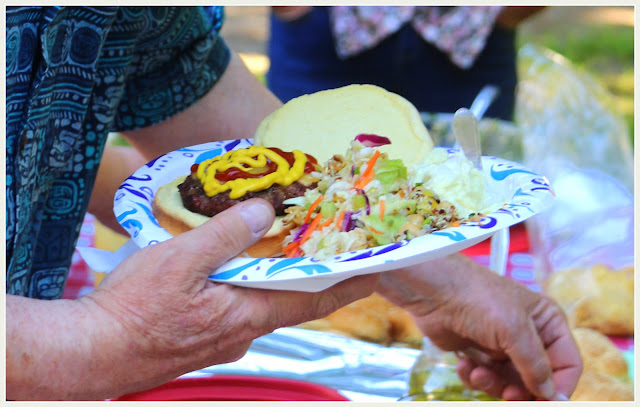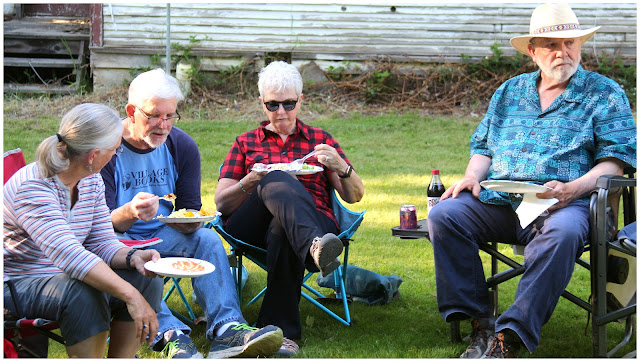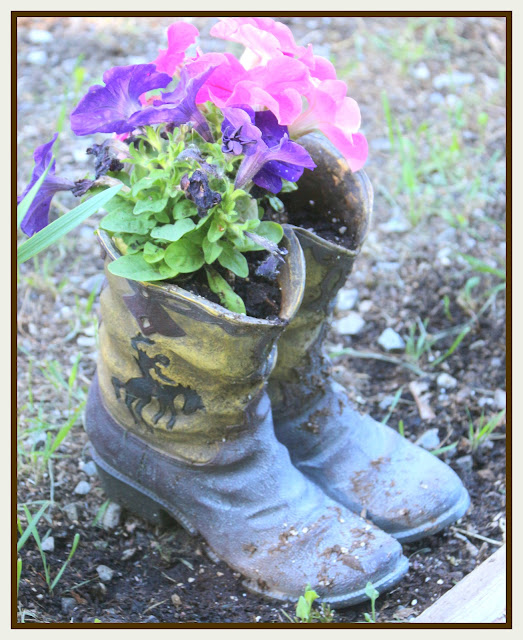Corinne Williams
For the Appaloosa Journal
Sept., 2000
By Marianne Love
Corinne Williams’ soft brown eyes help tell the story as she sits in a friend’s North Idaho home, strumming a guitar and singing lyrics from “Why Do You Ride for Money?”
Recalling a favorite tune among her repertoire of 3,000 performed in
Arizona cowboy bars decades ago, her expression turns nostalgic. Halfway
through a verse, she stops. Her eyes light up with quiet pride. She smiles.
Corinne enjoys taking a step back in time, recalling memories of her life as a
Western entertainer.
While on a week-long visit to Sandpoint last August with her friend, Bonnie Shields (the Tennessee Mule Artist), Corinne left her home in the Nevada desert to see some trees and mountains.
Besides trail rides on Bonnie’s mules and huckleberry
picking, the two reminisced about the good ol’ days when Corinne rode in major
rodeos and Wild West shows. One evening several women from the local Back
Country Horsemen brought potluck to Bonnie’s house to meet Corinne and to hear
her stories about life as a PRCA bulldogger, bronc buster and trick rider.
“They
thought she was grand,” Bonnie said. “She’s lived her life doing what she
wanted to do. In cowboy’s terms, she’s the ‘pure quill’ or the real thing.
She’s been there, done that, and she’s one of the most genuine people I’ve ever
known.
“She’s got
character to burn,” Shields adds. “She has known all the greats in the rodeo
world, and she’s done all these fantasy things I dreamed about as a little
girl.”
There was a time in the early 1950s when Corinne--tall, blonde and attractive--actually did sing for the money and more fervently for the dream of someday riding with professional cowboys.
Once a lonely young woman enduring the sadness of a
childhood in boarding schools or foster homes, she eventually rose among the
giants in rough-and-tumble athletic competition. Through the sport of rodeo,
Corinne found a sense of family among her contemporaries and eventually
succeeded in rearing her own two children, Bonnie and Chris.
When her dream became full-blown reality, there was also a time in 1962 when she appeared on the television quiz show “What’s My Line.”
Wearing lace gloves, a
velvet taffeta skirt, and a beauty-parlor hairdo she stumped the panel,
including regular Dorothy Kilgallen who thought she was surely in show
business. Well, she was in show business but hardly the kind Dorothy Kilgallen
envisioned.
At the time, Corinne’s show business included everything from wrestling cantankerous steers to performing breath-taking stunts aboard a cooperative Appaloosa horse. She also sang for the audience before every rodeo.
Once, she even performed
tirelessly with 22 different head of stock over six days at Omaha, Nebraska’s
Aksarben Coliseum where, during one show, Russian Premier Nikita Khruschev sat
in the audience.
“He thought
riding the bucking stock was ridiculous,” she recalled, “but he liked the girl
who could throw down the steer. The cowboys teased me to death over that and
said he’d be taking me back to Russia.”
The memories are dear to this New Jersey native whose rugged independent spirit brought her Westward to Arizona ranch life and eventually to a career in a world dominated by men.
Corinne, once known as “Smokey Forrest” because of childhood years spent in North Carolina’s Smokey Mountains as a farm laborer during World War II, carries a small leather photo album with old snapshots of some of the cowboy legends she knew personally.
She also carries a card verifying her
lifetime membership in the Professional Rodeo Cowboys Assoc. And during each
year’s National Finals Rodeo, she’s among the crowd in the Gold Card room where
“all your rodeo heroes are.
“All my
rodeo heroes are dying,” she says sadly. Her heroes include greats like Jim
Shoulders (still living), Casey Tibbs (whom she knew like a brother) and her
personal favorite Bill Linderman. “Casey was the showman,” she recalls. “but
Bill had the heart.” Linderman helped convince her to stick with the PRCA
because at the time the newly formed Girls’ Rodeo Association did not include
bulldogging, her favorite event.
“I think I’m
the only woman who ever made a full-time living bulldogging,” she says. Her
bulldogging roots came while working on the Arizona ranch with two Papago
Indians.
“We did flanking of calves. We’d throw ‘em down, brand ‘em and castrate ‘em,” she recalled. “Girls didn’t do that.” One day she and her friends entered a jackpot rodeo where she was the only one of the three to succeed in bulldogging a steer.
She says her methods were not refined at the time because she hoolihanned or tripped the steer. Her
style improved, though, thanks to guidance from Neal Gay, father of 8-time
World Champion bull rider Donnie Gay.
She also rode broncs after getting her start in shotgun chutes where three sides fell to the ground, releasing both rider and mount to jump clear. That was during her days of performing for Wild West shows for famous Texan entrepreneurs like Bobby Estes and Texas Kidd, Jr. Kidd hired her to work his bronc show at a kiddie carnival which also featured a string of wild horses going from town to town.
Bets would be taken, and the bucking string performed in a temporary
arena of chicken wire set up on hard ground. She earned $3 a day selling ferris
wheel tickets for Kidd who also taught her the basics of bronc riding,
including how to get away from a falling horse.
“He made a
bronc rider out of me,” she says. “What I learned, I used my whole life.” One
time in Las Vegas, that knowledge helped her successfully ride a horse named
Kohr’s Hightower which had unloaded Casey Tibbs.
“He dumped
me at (stock owner) Lynn Butler’s feet—but after the whistle,” she recalled.
After her
Wild West gigs, Corinne’s musical talent helped launch her dream of performing
in real rodeos---with a little help from Linderman. The all-around rodeo legend
listened to Corinne perform traditional cowboy songs in Denver, got to know her
and eventually took her under his wing. Thanks, to his influence, she spent
almost two decades during the ‘50s and ‘60s traveling the RCA rodeo circuit as
an exhibition rider.
“He was my
hero. When I was in high school, I’d read about him in Hoots and Horns,
the rodeo magazine,” she recalled. “I was like an adopted family friend. I was
so proud when he hazed for me in Las Vegas.”
Nowadays,
her stove-up but athletic 71-year-old body constantly reminds her of broncs
ridden or steers pinned to the ground at big shows like Cheyenne, Calgary or
Pendleton. At these rodeos, the world champion cowboys also let her use their
horses for bulldogging while others hazed for her.
“I’d walk up
and ride their horses,” Corinne recalls. “They were nice to me; they were like
a bunch of brothers.”
She also
wowed audiences with her athletic skills as a trick rider, wearing colorful
outfits and performing acrobatics as her mount circled the arena. Her horse of
choice for trick riding was usually an Appaloosa. One of her favorites was a
handsome Palomino named Diablo. Bobby Estes originally brought the horse from
Mexico City.
“I bought
Diablo for $1,000,” she recalls. “It took me a year to pay for him.” Corinne’s
daughter Bonnie Eloise (named for one of Corinne’s favorite Mitch Miller tunes)
remembers riding Diablo as a child and says the horse was badly named.
“That was a
rotten name for such a nice horse,” she says. “It means ‘devil’ in Spanish.
That was the sweetest horse ever. You could set me up on him, let him go and he
would never hurt you.”
Bonnie, now
42 and a full-time mother in Sandy Valley, Nev., eventually followed her
mother’s footsteps as a trick rider and singer. In fact, as a teenager, Bonnie
learned the ropes of trick riding on another Appaloosa mare named Pocahantas.
The big-boned leopard mare with cinnamon-colored spots from a pack string in
Craig, Colo., took good care of Bonnie as her mother guided her through the
basics of trick riding.
“I put a
pole on a 50-gallon barrel and she could jump over it,” Bonnie recalled. “I
rode her bareback doing it.” Bonnie Eloise also earned a name for herself in
rodeo circles, spending one summer in Japan with Monty Montana’s show. Her
Raggedy Ann act aboard a pair of mules, Punkin and Ziggy, was a crowd favorite,
and she eventually performed in a medieval act at the Excalibur Casino in Las
Vegas.
Both Corinne and Bonnie have retired from the Western entertainment business. Bonnie got burned out, while Corinne’s beat-up, bionic body has slowed her down. One knee’s been replaced; the other arthroscoped.
Her replacement left ankle came
compliments of Loma Linda Research Hospital while the right one has been
arthroscoped. She has two huge lumps resulting from a ride aboard a bronc named
Tornado, who “turned, dumped and pulled the ribs off my cartilege.”
“I rode him
though—just barely,” she says. “Gerold Roberts got mad at his brother Ken for
puttin’ me on that horse.”
Years of hard work, including shoeing horses, has also left Corinne with a 3-level fusion on her lower back. With a few other assorted body repairs, she lives quietly near her daughter and still enjoys singing and dabbling with artwork.
Sadly, her modest monthly disability check does not offer much to show for the
decades of performing alongside her famous cowboy heroes and friends. But for
Corinne Williams, the memories of the glory days of rodeo and those friends
remain priceless.














No comments:
Post a Comment